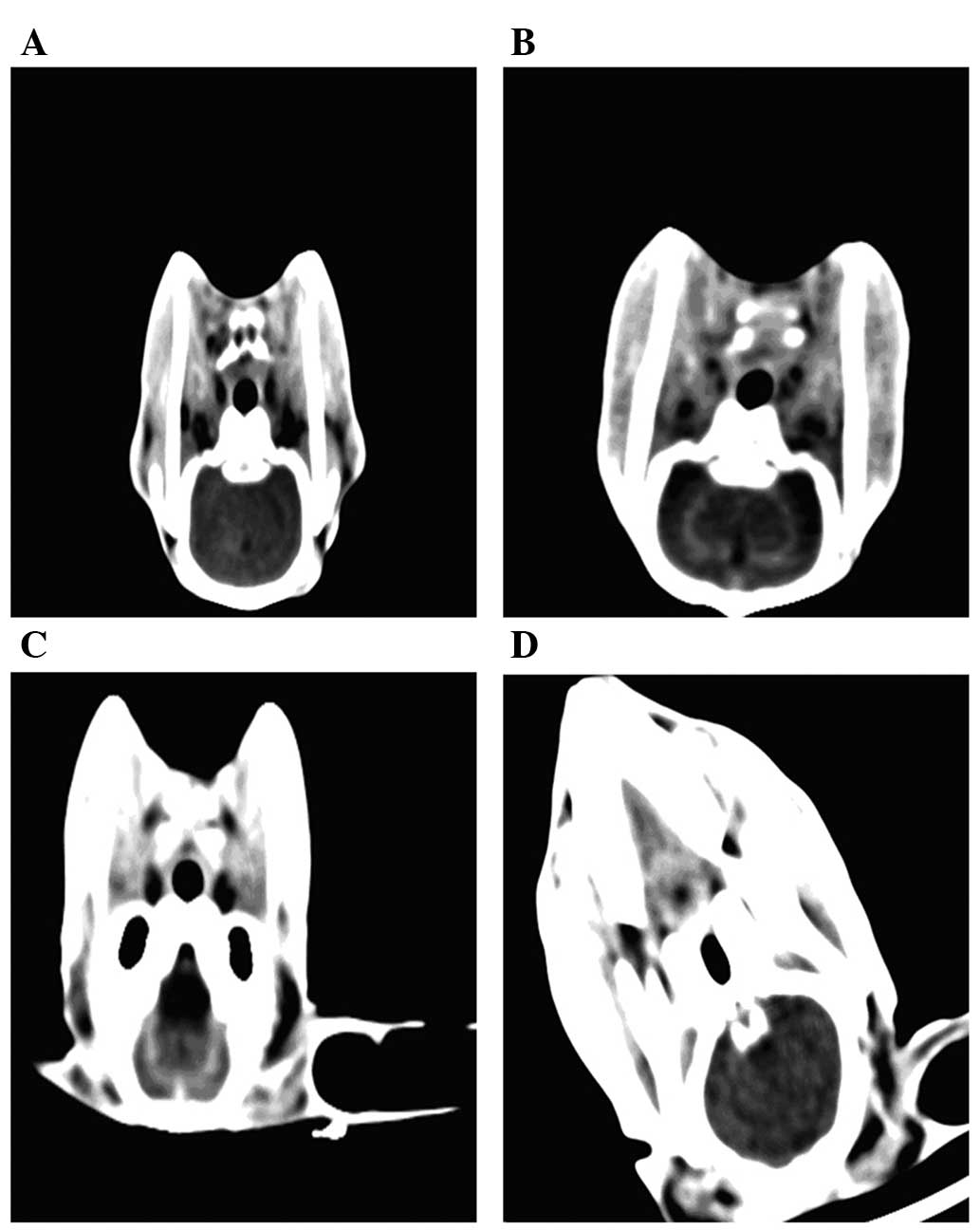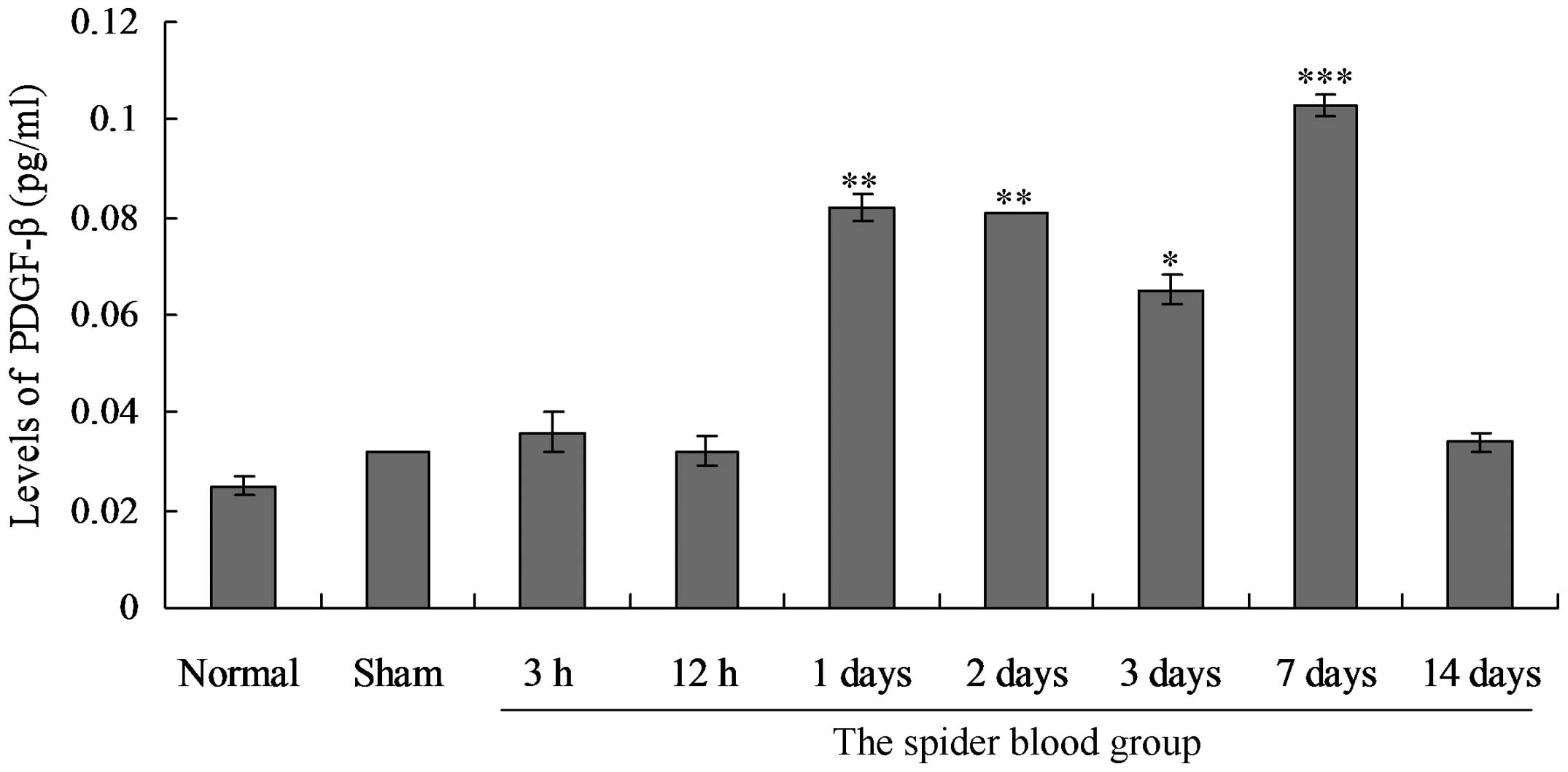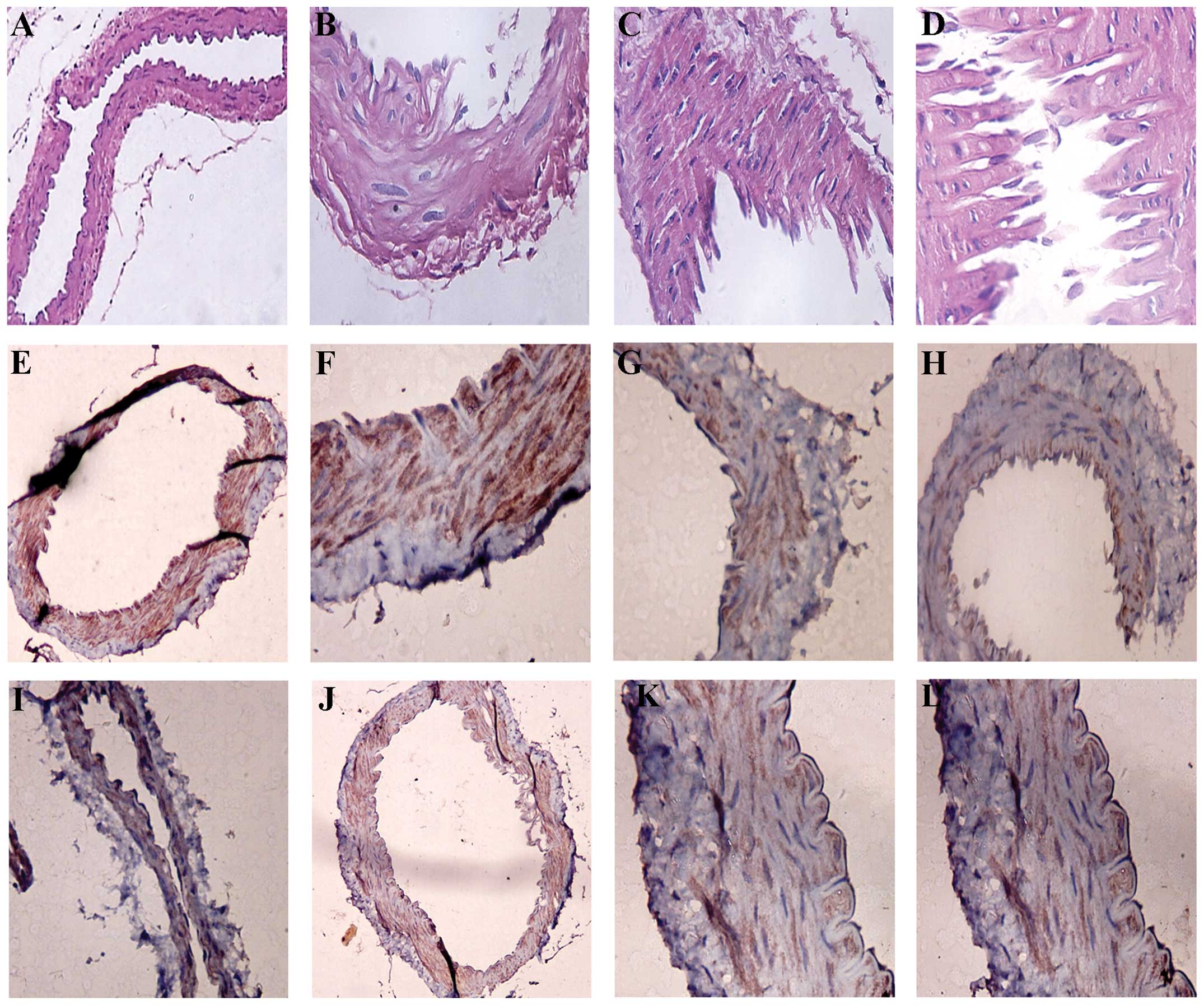Platelet-derived growth factor-β expression in rabbit models of cerebral vasospasm following subarachnoid hemorrhage
- Authors:
- Published online on: June 20, 2014 https://doi.org/10.3892/mmr.2014.2350
- Pages: 1416-1422
Metrics: Total
Views: 0 (Spandidos Publications: | PMC Statistics: )
Total PDF Downloads: 0 (Spandidos Publications: | PMC Statistics: )
Abstract
Subarachnoid hemorrhage (SAH), one of the serious types of stroke incurred by bleeding into the space surrounding the brain, occurs when brains are deprived of oxygen by various factors, particularly an interruption to the blood supply or a ruptured aneurysm. Cerebral vasospasm (CVS) is one of the most common complications of SAH. It has been proposed that platelet‑derived growth factor (PDGF) is involved in CVS. The aim of the present study was to analyze expression of PDGF in rabbit models of CVS. Post-SAH CVS rabbit models were created using endovascular puncture and employed to analyze the expression patterns of PDGF by enzyme-linked immunosorbent assay and immunohistochemistry. The results indicated that the creation of the rabbit model of CVS induced using endovascular puncture was successful and demonstrated the double phase changes observed in human CVS. The acute stage started at 12 h post-SAH with narrowing of the vascular lumen diameter. This narrowing appeared again on the seventh day in delayed CVS alongside increased thickness of vessel walls. PDGF-β expression was observed in vascular smooth muscle cells of the rabbit models. PDGF-β was expressed as early as 3 h post-SAH, it was evident after 1 day and reached a peak in 7 days, suggesting that PDGF-β is involved in the early stages of CVS. In the current study, it was confirmed that PDGF-β expression was present in the rabbit models of CVS, which may aid the elucidation of the pathogenesis of CVS, and also provide useful information for diagnosis and treatment of CVS.














